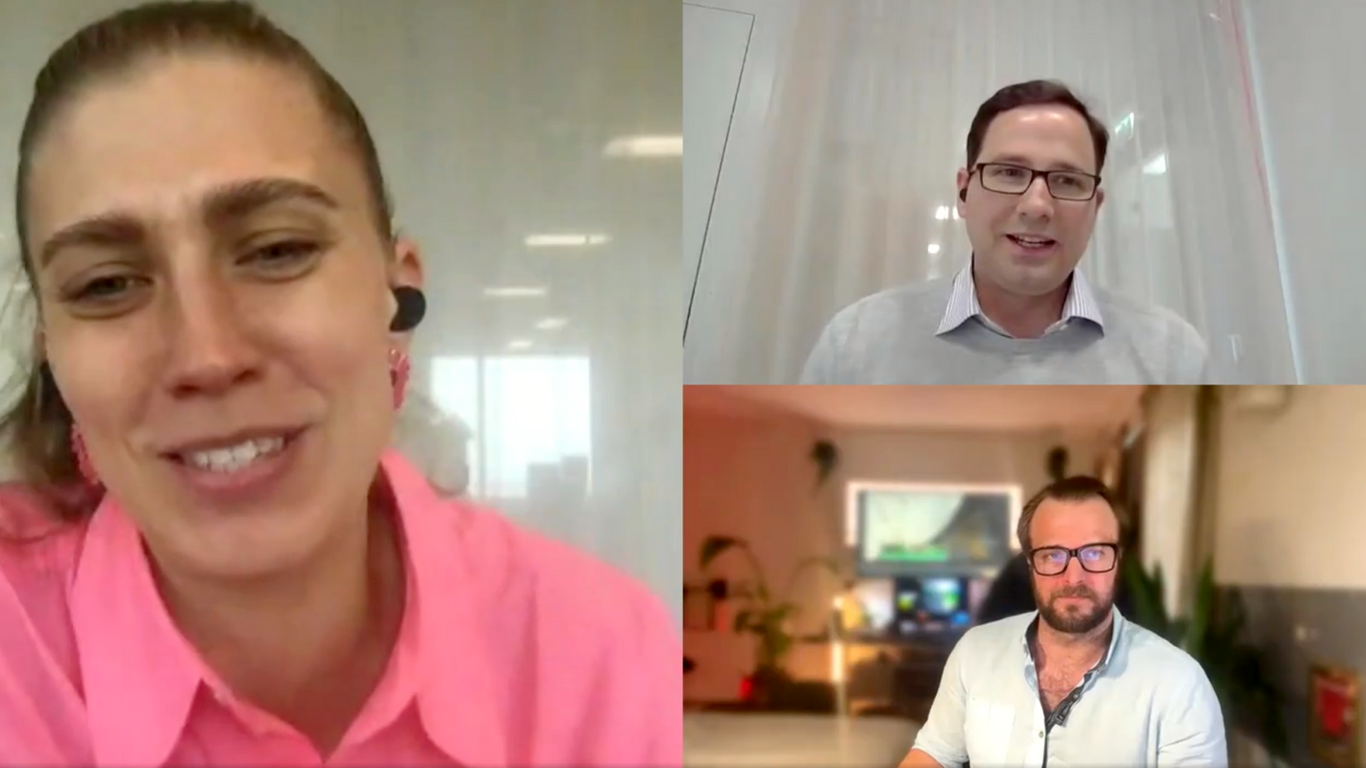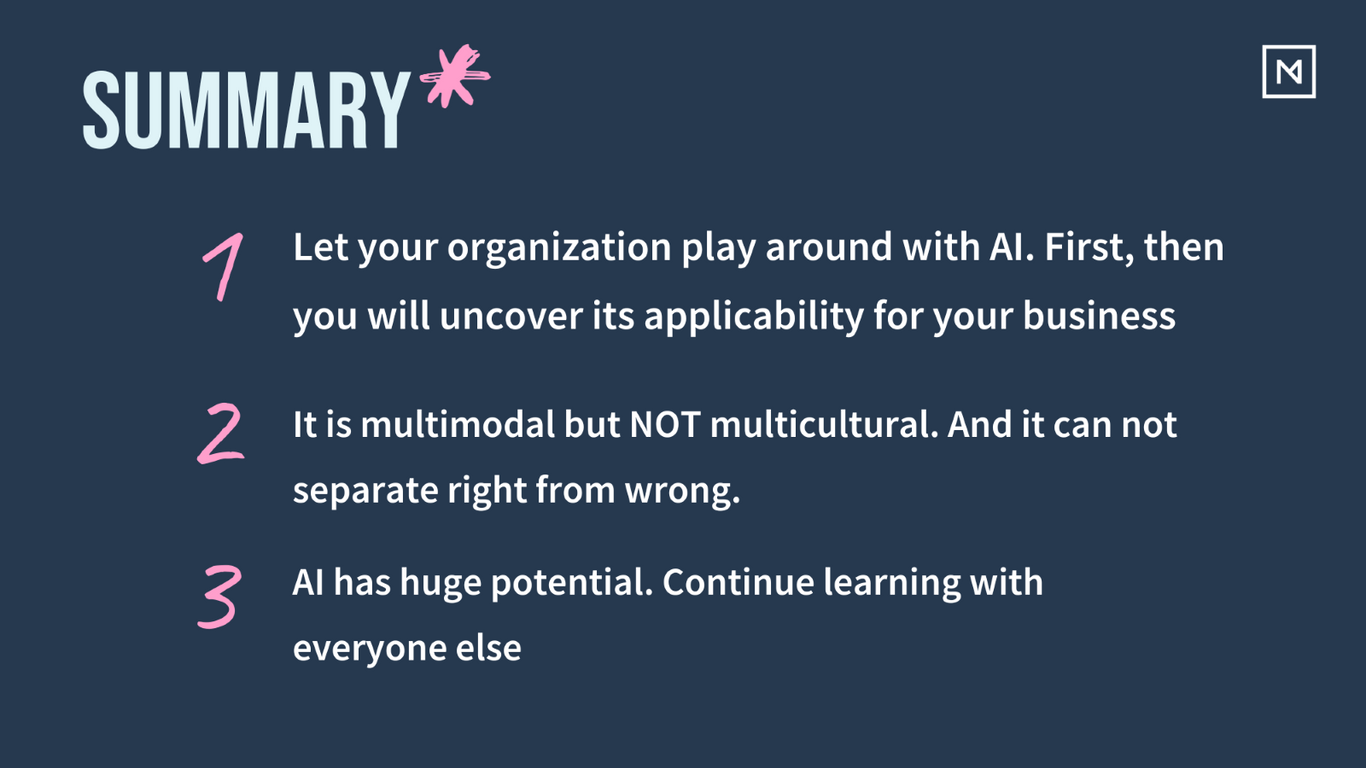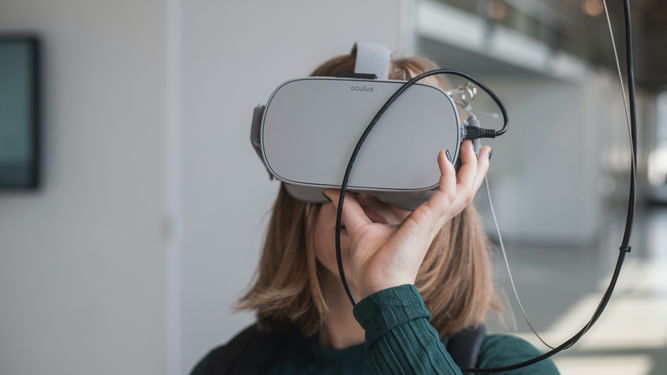Strategy
Nordic Morning Talks: Automation and AI for Marketing Success
05/11/23
On May 11th, we hosted the eigth session in our Nordic Morning Talks LinkedIn Live series. These sessions are dedicated to discussing emerging business challenges in the field of digital and a space to showcase some of our projects with some of our clients.
In this session, Martech Lead Kevin Mullaney from Nordic Morning Malmö, Videographer and Animator Alexander Neufert from our sister agency Pyramid, and Client Director Moa Rydlöv from Nordic Morning Malmö shared key insights on how to manage expectations and stay ahead of your competitors when it comes to AI and Digital Automation.
In this session you will learn:
- Reality and expectations on AI and Automation
- How to integrate AI and Automation in workflows and processes
- Examples of how Nordic Morning and Pyramid has integrated these technologies with clients.
If you prefer to watch this 30' minute session, click here

Moa Rydlöv (MR): Hi, everyone and welcome. We are so excited that you decided to join us today. We will touch the topic on everyone's mind: AI and Automation. And at the end of this session, we hope that we have brought with some hands-on tips on how you can use these technologies well in your daily work. We will share some experience of our own when we've tried to apply it to our projects and to our processes.
However, while putting this talk together, we have a challenge. This field is moving so quickly, that we've had to constantly update the content. And so just as a disclaimer, if you ever watch this in the future, it may not have aged well. With that being said, I'll introduce you to the panel. With me today I have Kevin Mullaney and Alexander Neufert.
Kevin, what is your perspective on AI?
Kevin Mullaney (KM): Hi Moa, I'm excited to be talking about an exciting topic for me. I lead the Martech team down here in Malmö for Nordic Morning. We spend a lot of our time doing growth and performance strategies for our clients. And a lot of that involves working with AI already. We work with search engines and ad platforms and analytics dashboards on a daily basis. So, I think for me, the kind of perspective I bring in is that we're using AI and machines to help us humans actually do better work feeding machines. Hopefully, I can give you some tips and tricks around that sort of a perspective today.
MR: Alexander, you bring a whole other perspective to AI, right?
Alexander Neufert (AN): Hi, I'm Alexander, Videographer and Animator, and there's been a lot of very interesting discussions, especially around the agency with other creatives. Because when something like this comes along, you see that the things you've been thinking about for a long time are going to happen right now. There's a lot of things that used to take a lot of time and manual labor that's now coming through our applications. So these are very exciting times. I'm very happy to have this talk.
MR: What is the first thing that you would like to mention when it comes to AI, Kevin?
KM: First, you want lawn mower. this whole situation is moving at breakneck speed and we're really kind of in unprecedented times. Chat GPT, which has been making the big splash and all the headlines, Chat GPT 3 was launched to the public only last November, and it really skyrocketed in terms of its user growth, having over 100 million users in just two months. If you compare it to the next fastest growing app in history, it took Instagram two and a half months to only get one million users. So, you're kind of seeing the step change, people are voting with their feet, and they're clicking with their mouse, because they really want to be testing and using this technology. So if we look at it from that perspective, we're seeing 100x growth in users for ChatGPT.
So, the hype is deserved but I think there's a few misconceptions that we want to clear up, separating the headlines from the topic, the applicability. And essentially, we've been living with AI enabled tools for a long time. This isn't new to the conversation, particularly for marketers. But the first wave of AI was things that we use on a daily basis: search engines, shopping engines, even your spell checker is AI enabled. So, these tools have been with us for a while, but they've been quite limited in terms of their applicability, typically kind of ranking information for us and are still doing the hard work. What's different with this second wave of AI ChatGPT, Bard, and many of the others up and coming tools is that they're generative. They can produce, curate and reply with near human responses almost instantaneously, because they are trained on these large language models, a huge corpus of information, that it's learned on.
The other big misconception that we need to address is that AI is not intelligent in the way that the headlines might lead you to believe. What it is when you're dealing with ChatGPT is a very adept plagiarizer, it's only as smart as the information within its large language model. So, it has a lot of different biases built into it. It doesn't discern true from false, and as it is trained on a huge accumulation of human knowledge, the Internet, books and everything else. There's a lot of false information out there. And it really believes what it's fed. The point here is, and that we'll discuss today is, what is the actual applications. This technology is only as useful as the people prompting it and the outcomes that you can use from it. But I think what's interesting is obviously ChatGPT launched a couple months ago.
KM: Alexander, it's the first firing gun for creators and designers to be able to use the tool and get to play with it.
AN: That's a great intro to the first wave of AI, which was the ranking systems. Maybe many people haven't thought about it, but we're surrounded with the systems that constantly rank us and tell us what to watch on social media and suggest content for us. And now we're experiencing the second wave of transformative AI, which is generative AI that's creating the content. Before chatbots, and such haven't really been up to the task to do the job, but now it's speaking in a way that feels human and it's applicable to a lot of different things. Its hype began in November when ChatGPT 3 was released, and now since March was ChatGPT 4, it's become multimodal, which means it now can take in from various sources, you could have text image, or both. And it not only recognizes image, it can look at an image and understand the composition and make a logical sense out of it. So it can predict the outcome which is what the AI models are really good at, looking at patterns trained on large sets of data to predict the pattern of it.
So, for an example, you could take a picture of something in your fridge and it can immediately give you an outcome of recipes available for that. Or as one copywriter told me, it can understand the absurdity of a situation so you could play something that wouldn't really fit into an image, and you can actually understand that that's not supposed to be there and understand things like satire or sarcasm. So, it's beginning to read images in a way that humans do. And this will now with the API from ChatGPT 4 be applicable in various applications.
MR:We've talked a little bit about high expectations on AI. But doesn't it boil down to how we will learn to use it in our daily work?
KM: Bridging that gulf between expectations and applicability is the key challenge at the moment. The one big key takeaway from the session would really be: Learn by doing, start small, and then scale, so you need to get these tools into the hands of your employees. I recommend getting Open AI Plus, which is the ChatGPT subscription model, means you don't have to hang around, and you can use the tool much more efficiently. But then you need to give your employees time and space to experiment with these different tools to develop different frameworks for actually documenting different tasks and other things. And create forums between teams and also specialist teams to share this knowledge and to be able to get that kind of institutional knowledge within an organization.
From a business perspective for managers and team leads, you really need to look at your overall processes and workflows, and then give your employees, the specialists, the time to be able to, within those workflows, go and identify all of the bite sized tasks, the ones that are often quite time consuming, and give them the time to be able to find the right prompts to be able to solve these micro tasks, and refine the outcomes from those prompts, and get these micro processes in place. Because ultimately, what's going to happen if you're going to be scaling this and seeing the real business value is the sum of these tasks which is the workflow itself will be greater than that sum. So, again, start small, document, and scale up to a wider business processes.
MR: You mentioned a little bit about frameworks. Can you develop that a little bit?
KM: Yeah, it might not be the interesting stuff, but I think it's super important. If we're talking about the driving value at a business scale, it's about the institutional knowledge that you build. So what you don't want to do is have someone approaching a task for the first time every time, you want to get start with that small task, make it a very defined brief, figure out the right prompts, the right outcomes and the right way of delivering the value using AI. And then you want people to document that micro task, that process so that anyone within the organization can come to it and not start from scratch, but follow that same process. And by building out these blocks everywhere through the organization and having a really good way of sharing that information and that knowledge means that you'll be able to drive the efficiency and improvements at scale.
MR: How have you used AI in your daily work, Alexander?
AN: We often, as creatives, when we want to do something, we extend ourselves with our imagination to know what's possible, and then we break it down to what's feasible, or what would bring too much time, complexity or scale to be able to do. And now we're seeing these things becoming possible and being put into to a workflow. So we're seeing a lot of different generative AI models getting a lot of traction, such as Stable Diffusion, Mid Journey, DALLE-2, and the newly released beta Firefly by Adobe. The interesting thing about Adobe taking this path is that we're now seeing this being brought into the industry standard. So they've been working on this for a long time.
If you're a geek like us, you can look up what they've been working on and get pretty excited about it. But now they're putting into place how this is going to work for the future. And AI will become sort of a co-pilot generating content in real time by you prompting or speaking in plain English to tell you what to do. And that will enable creators to be more focused on the storytelling and conceptualization and less time on repetitive tasks. So we're witnessing the beginning of a whole new language of content creation.
MR: You mentioned that AI can be considered a co-pilot and Kevin referred to it as an intern. Can you tell us more about that?
KM: I think a co-pilot or an intern are both really good ways for describing how you can use chatGPT and Bard and other AI tools. Because if you have an intern, a good working relationship with an intern, you don't just give them the keys to the office and go on holiday. Working with an intern involves real coaching, you have to give them very defined briefs, bite sized tasks, again, the prompts in AI terms, and then once they give you a delivery, then you actually need to be able to give them really good feedback about what can be improved, you don't just take that delivery and give it straight to a client or create an ad from it, you really need to scrutinize it, and you need to expand upon it.
So essentially if you view AI as an intern that has unlimited resource and infinite library, and can basically give you a near instant response, I think it's a good way of viewing things. However, like an intern, they don't have any real world experience, they're very new to the industry, they don't know processes. So again, imagine everyone having an intern who can speak several different languages and give you near instant responses. Imagine what that could do for productivity, but you need to have that process and that mentoring relationship that you would have with an intern to get the most out of it.
MR: Can we dive deeper into the applicability? How have we tried to use AI for Nordic Morning in our clients?
KM: I'll give you an example of workflow that I did recently. And again, another tip is make sure you got ChatGPT just bookmarked on your browser and use it whenever the moment takes you to see what you can get out of it. Recently, we went through a pitch process, and then an onboarding and strategy with a new SEO client. __I found that ChatGPT was able to give me a lot of different shortcuts and headstart on work that would take a lot longer__. In this case, the client was a big ecommerce seller of quite niche products, and typically it would take a little while for me to get into the site structure and the website and figure out the key categories, subcategories, etc. ChatGPT was able to create that structure and template for categories, subcategories, expand on keywords, dig deeper on ones that we saw had the most potential to give me a first draft of a site structure and a keyword structure. This gave me more time to go into the tools that ChatGPT doesn't have access to, to do much deeper research than I'd normally be able to do, and produce and agree with a client a strategy that is much more well-rounded and robust. And then once we have that strategy, and the backlog of activities and things agreed I was able to deliver much quicker.
So, when we are writing copy for SEO, for example, and creating new pages, I was able to tell ChatGPT to review some of the top ranking websites to write an article in the tone of voice of the brand itself, which is a new adaptation for ChatGPT 4, and I was able to ask it to include different USPs: "You missed this bit, this segment, please include this as a text module". But what it gave me is the ability to be much more, it enabled me to get to a first draft of something much quicker. And from there, I was able to expand and create a page that given the normal amount of time, we were dedicated to these kinds of things, a much better outcome.
But again, it didn't take a lot of adaptation, a lot of feedback and a lot of prompting to be able to get the right outcomes. So once we have this great SEO content, that is a nice collaboration between my co-pilot and myself, we translated that content to multiple different languages much quicker as well. So again, I see AI in this sort of workflow a fault force multiplier in terms of what I do.
From the translation side of things. It's important to note that __ChatGPT is multilingual, but it is mono cultural.__ So, it can speak Swedish, but it isn't Swedish. It's much more American leaning because of the weight of content and its language model. So again, you still need a native speaker and copyright to polish these things off and adapt them to be able to be fit for the market. You don't want to take it anything directly from an AI and put it out there without doing those sorts of things. So for me, it's just provided a lot of shortcuts for things that took a lot longer before to produce better outcomes.
MR: Alexander, how AI has helped you in your tasks? How, how long have you been trying it out?
AN: We're now in the beginning, testing the waters of the generative AI, but I can give us some examples of what's to come and how I have used it so far. There's one example for creating a virtual environment and combining that with a green screen footage, which is something that you had to have done before. Now there is some added complexity, or it's a larger project, or you are going to add some elements that were not there before, then the AI can be a really good tool as an expert to help you trial and error before it is time to produce. And now with generative AI, you can also generate examples that are very close to what you're going to use when it is time to shoot.
So you experiment with the process with the help of AI to be sure of every applicability that you're going to do and get some feedback on things you haven't thought about, that could possibly happen. The same way to ChatGPT now is becoming like a tutor for schools or helping doctors to examine things because we humans can't use large databases.
Adobe announced their Firefly beta, which I was lucky enough to have some access to. What we're seeing is a for example, auto generated 3d previews of imported scripts. You import your script, you've got your text, and the software will give you a preview of how that would look as a storyboard. They're also introducing text to video, which is rewriting the way we use the applications for such things, which would allow us to edit videos with only text prompt or sampling English. It can also create vector images in Illustrator by simply telling it what you want.
So we're going to see a lot of AI generated videos, pictures, music, soundtracks voiceovers, and with what we talked about earlier, AI being able to recognize images, it can now determine what would you need for this scene. With Adobe taking lead on this, you will have that in a commercially feasible way. So it's really changing the way we're going to continue to work in the top industry applications.
Open AI just released another project and that's text to 3D. You're not only getting images and sound, but also 3D models from simply explaining what you want. So we're going to see a world with this as a co-pilot creating content in real time, either as a visual aid, or as a part of the content that we create.
MR: You talked about a way to cheat if you didn't know how to prompt.
AN: It can understand and give you prompts. You can do reverse prompting, which means that you could feed it with an image and it would tell you to generate something like this. These are the prompts that would be suggested. And in that sense, the better you are at prompting, the closer you're going to get to the image that you wanted. If you become really good at this, then you can generate high quality, close-to what-you-imagined content in real time.
Takeaways
MR: If you could share one major takeout from this session, what would that be?
AN: it's been a lot of discussions among creatives, both at the agency and among videographers. It was the Facebook targeting, the introduction of DSLRs, the Internet or whatsoever. There's a common consensus right now that these are one of the major things that's going to revolutionize the way we work. A lot of emphasis on what Kevin said earlier, __organizations need to learn how to incorporate this into their workflows, while ensuring not to undermine the creative process. We're going to understand is on micro and macro level, and be a bit experimented to kind of figure out where it fits in.
But it's not going to replace creatives, it's going to aid them and enable them to do things that weren't feasible before and work more efficiently. That's inevitably where we're gonna go. Last month, Adobe announced that they are going to put this in all of their industry leading applications, rewriting the way we create content. And that offers a great opportunity for us to enable functions and workflows that weren't possible before. So this is just the beginning.
KM: I see AI arriving at the right time, because I've been seeing within marketing and the industry for a little while that there's been a pressure building up that was difficult to solve. Consumers are having much higher expectations on brands and marketing teams at the moment. They want greater personalization, better service, brands are expected to be on more channels with so many more different formats and creatives that they have to work with. But __we're in a tough market condition, budgets or investment within marketing isn't increasing to match that. So AI, particularly from the productivity side__, is bridging that otherwise unbridgeable gap between expectations from consumers, and what we can invest in marketing. So, it's really going to enable us to be much more efficient on how we deliver our work but also much more targeted on the number of messages and audiences and channels that we can actually be present on in a meaningful way.

Q&A
Malin: How can businesses ensure that their AI models are trained on unbiased data?
AK: AI is only going to be as good as the data is trained on its trade on massive amounts of data to learn patterns and repeat them to generate something new. You can still end up with bias data and which unintentionally will discriminate or cause people to feel less valued. Though, as I mentioned before, this is one of the things that Adobe has been working on for a long time, you can watch their panel talks from years ago, and they talk about this, they have a AI Committee, which work with ethical questions of this. So they've been working on this for a long time, it's going to be like baby steps, but we're getting towards some sort of regulation and safety concerns about this. But still AI is pretty wild at the moment. So you could expect there gonna be some time to manage that bias.
KM: We were talking about the intern analogy before. I saw another comment in there, as well about providing sensitive data. And again, you need to treat it like an intern. Don't be giving sensitive business information about you or your clients. And you need to scrutinize as output. You can't really influence the large language model and its contents essentially for chat GPT. But what businesses really, really need to do is make sure that they have robust quality assurance processes within the again, we don't want to be taking whatever is just delivered by the AI intern and putting it straight into the market, because that could actually lead to some serious reputational damage or crisis, without scrutinizing or adapting. So again, treat it like an intern, don't swallow up whole, make sure that you have the processes within your business to do quality assurance.
Camilla: How do you measure AI success?
KM: First, it's going to be about productivity. So essentially, are your teams who are actually adopting AI looking at the tasks and processes and things, are they able to do greater outputs with the same time? Are we able to do more deliveries in terms of creatives or messaging or targeting different audiences and things like that? Second, it's going to be about performance. If we're putting more variations, more creative, more tests into the market, is it performing better within the ad systems? Or is it getting better engagements or better rankings, for example? The last one is innovation, if you're a team lead, or a manager or a team member, are people excited? Are they the tails wagging and people coming with new ideas and new ways of doing stuff on a regular basis? Because if you have that kind of environment, to be playful with these things, you're gonna get the best results out of it.
AN: I could add to that with the images, it's the quality of it, but how closely it will resemble the image that you want it that comes down to sort of the model you're using and the prompting. We did one test at our office to have a prompt or film team and the dog that my colleague brought. And then since I put in Danish Swedish farm dog, it made us all into farmers holding video cameras, which was kind of a funny result of it. And as well, I had a friend was going to do a speech in the medical field and he wasn't convinced. And then we gave it a few prompts to what you really want to get out of it and suddenly he was surprised and said this is maybe even better than what I could have come up with. But it comes down to the way of prompting. There already models that help you, like there's reverse bumping. And there are the large corporations now, making panels with categories and suggestions to make this part easier, but it's really going to be a future skill to have in order to get a grasp.
KM: Just to put an exclamation point on that, I think you're talking about hallucinations, which is when you have an outcome that you didn't expect. And then there's also emerging properties where the AI actually does a skill that its designers didn't even know it was capable of so I think to leave it on a note: Chat GPT 5 is expected by the end of the year start of next. So watch this space, it's gonna get exciting.
Axel: Isn't sharing of data a risk? Look at the resent case with Accenture as an example.
AN: Great question, but I think we need to be more specific about how AI is beign used since different companies have separate solutions. As an example, you can read about the AI ethics committee regarding Adobes handling of AI. And ChatGPT to not store use data.
KM: We didn't have time to touch on this subject during the session but it's an important one to highlight because I see confidentiality around sensitive information as a given. It's important to know that unlike WhatsApp your data isn't encrypted or secured, all of your conversations with ChatGPT are processed and stored indefinitely and can be reviewed by their human AI trainers. Additionally your conversations are also vulnerable to bugs and cyber-attack and there have been instances where user's conversation subject headlines have been accessed by others. This has led large companies like Accenture and JPMorgan banning ChatGPT for their employees due to the risks around leaks and attacks. Like I said in the Live session, treat ChatGPT like an intern, they haven't signed an NDA and shouldn't be given information that you wouldn't want shared outside your organisation including personal information, business information and in particular legal information. Lots of people find ChatGPT great at analysing or summarising legal documents but imagine the amount of sensitive data in documents like this. So be smart, don't share anything sensitive just like you wouldn't with an intern
MR: Time's up. A big thank you to Kevin and Alexander for joining us today and sharing your perspective on AI and Automation.
Sources
Here's a source where you can find information to stay up to date on AI tools for your line of work.
Follow us on LinkedIn to get noticed about our next session!



